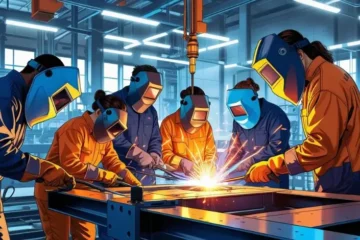Revolution in Digital Art: Understanding Advanced 3D Design Capabilities

3D Design Capabilities
The advent of digital technology has revolutionized various fields, and art is no exception. Modern software and advanced design tools, like the Adobe Substance 3D plugins, have transformed the digital art landscape, empowering artists with unparalleled creative freedom. Here is a deep dive into the capabilities shaping this digital art revolution.
Realism Through Detailed Texturing
The ability to bring 3D designs to life with hyper-realistic textures has ushered in a new digital art era. Just like a painter meticulously adds layers of paint to their canvas to create depth and texture, digital artists can now add incredible detail to their 3D models. This technique adds a layer of immersion, making digital objects seem tangible and convincingly real.
Incredible Customization with Material Editing
3D design software now offers unprecedented customization capabilities. Artists can modify the properties of their materials to control how light interacts with them, which is akin to adjusting the ingredients in a recipe to achieve the perfect flavor. This ability to finely tune materials allows digital artists to achieve precise visual outcomes, making their designs more engaging and lifelike.
Adobe professionals say, “Integrate Substance 3D into your workflow for great output.”
Lighting and Shadow for Enhanced Depth Perception
Lighting plays a crucial role in giving depth and dimension to 3D designs. By manipulating light sources and adjusting shadows, artists can create dramatic effects and enhance the viewer’s perception of depth. Think of it like a theater director employing lighting techniques to set the mood of a scene and draw focus to important elements.
In Substance 3D, artists have access to various lighting and rendering options, allowing them to experiment with various lighting setups. They can simulate different times of day, experiment with natural and artificial lighting, and even create moody, atmospheric scenes. The interplay of light and shadow adds realism and dimension to the artwork, making it visually striking and captivating.
Dynamic Animation for Added Realism
Animation capabilities in 3D design software add another level of realism to digital art. Artists can bring their 3D models to life with fluid movement and interaction. This ability to create dynamic digital art is like giving life to a puppet, taking the viewer’s engagement to a whole new level.
Substance 3D allows artists to animate textures and materials, adding motion and life to the designs. For example, water can ripple, flames can flicker, and fabrics can sway with the virtual wind. These subtle animations add authenticity to the artwork, making it feel alive and interactive.
Seamless Integration with Other Creative Tools
Another game-changing aspect is the seamless integration that modern 3D design tools offer with other software. This allows artists to move their work effortlessly between different platforms, each catering to specific aspects of the creative process. It’s like a well-coordinated orchestra, where each musician plays a unique part, yet all contribute harmoniously to the overall performance.
Substance 3D’s compatibility enables artists to combine the strengths of different tools in their creative workflow. They can sculpt and model in one software, texture and animate in another, and seamlessly bring everything together for a polished final result.
The advanced capabilities offered by modern 3D design tools have led to a revolution in digital art, pushing the boundaries of what’s possible and setting the stage for an exciting future. With detailed texturing, customization, dynamic lighting, animation, and seamless integration, digital artists have the power to create immersive and visually captivating art.
As you continue to embrace these advancements, one thing is clear – you’re only scratching the surface of the potential of digital art. Read more










